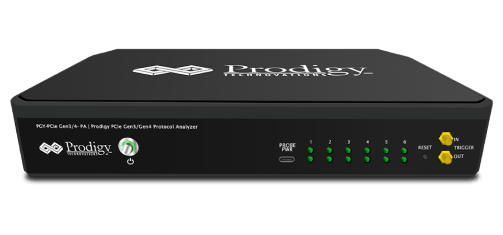



UFS 4.0 Protocol Analyzer
Product
Overview
Datasheet
Presentation
Application
Notes
PGY-UFS4.0-PA, UFS Protocol Analyzer is the industry-first working and tested UFS4.0 Protocol Analyzer. It offers protocol data capture and debugging of data across MPHY, UniPro, and UFS protocol layers. It allows for instantaneous decoding of UFS, UniPro, and MPHY layers with the flexibility to correlate decoded data across these protocol layers. PGY-UFS4.0-PA supports PWMG1 to HSG5B data rates and two TX, and two RX lane decode. The active probe has minimum electrical loading on the device under test (DUT) and captures protocol data without affecting the performance of DUT. PGY-UFS4.0- PA Protocol Analyzer supports two-lane data. Comprehensive on the fly decoding of UniPro & UFS data enables validation of communication between UFS host and device.
PGY-UFS4.0-PA Protocol Analyzer allows Design and Test Engineers to obtain deep insight into UFS host and device communication. MPHY/UniPRO/UFS packet-based triggering allows specific protocol data capture and analysis. PGY-UFS Protocol analyzer instantaneously provides decoding of UFS, UniPro, and MPHY layers with a correlation to MPHY, UniPro, and UFS layers.
I3C Protocol Trigger & Decode Software Datasheet
Key features
- I3C protocol Analysis using oscilloscope live channel data or stored I3C signals
- Powerful I3C real-time protocol aware hardware-based trigger capabilities.
- Displays the decoded data in I3C frame format, SDR, DDR, TSL and TSP format.
- Links protocol decoded packet to waveform in oscilloscope display.
- Error status check as defined in I3C specification
- Protocol view provides bit level decoding of each I3C packet.
- Detail view correlates physical layer waveform with I3C packet data
- Ability to process long acquisition memory enables the decoding of more protocol activities
- Search capabilities to locate protocol event
- Filter capabilities to view information of Interest
- Documentation by exporting data in CSV and TXT file format
- Report Generation
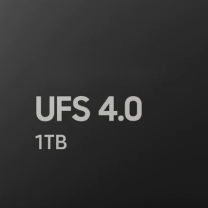

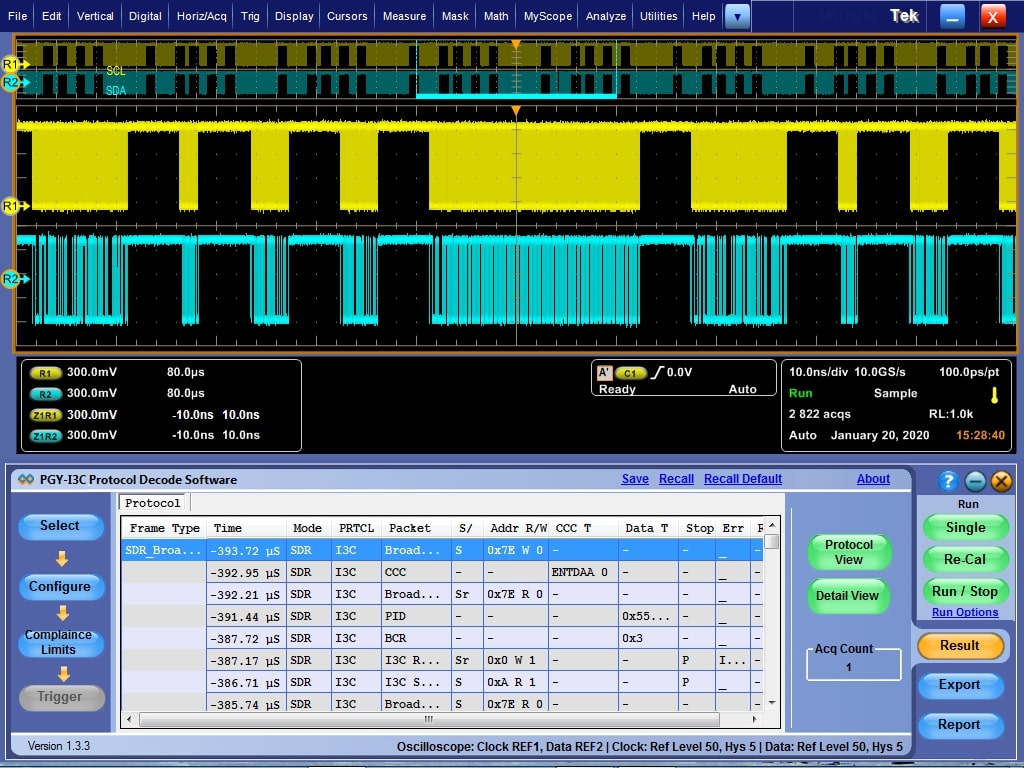
I3C interface would make significant changes to the mode in which sensors are interfaced to host processors in mobile and automotive applications PGY-I3C-PD Protocol Trigger & Decode Software enables engineers to quickly decode the protocol-intensive I3C signals. It enables easy debugging of I3C Protocol issues by triggering specific I3C Protocol packets and content and decoding the acquired waveform. PGY-I3C-PD provides industry-first protocol decode capabilities in Tektronix Windows oscilloscope.
PGY-I3C-PD Software runs inside Tektronix to make oscilloscopes such as DPO/MSO5000, DPO7000, and DPO/DSA/MSO70000 oscilloscope series. PGY-I3C-PD utilizes the hardware-based real-time I3C protocol aware trigger, and protocol analysis of long acquisition record length up to 125MB to provide superior I3CProtocol Analysis results at the press of a button.
Easy I3C Protocol Test Setup and Debug
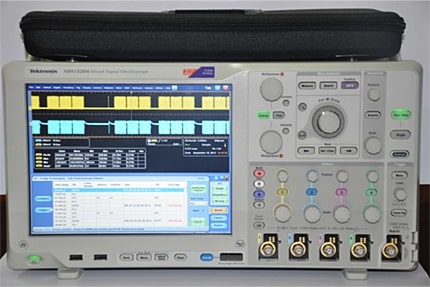
Powerful I3C Protocol Aware Hardware-Based Real-Time Trigger
Simple easy-to-use I3C protocol-aware trigger features allow engineers to capture I3C signals at specific events in the I3C interface. The trigger can be set for different commands of SDR_Broadcast, SDR_Direct, and SDR_message. I3C software provides the flexibility to select a combination of any command from any three frame types. This feature can be used on DPO7000, DPO/MSO70000 oscilloscope series.

Protocol View
Key Specifications
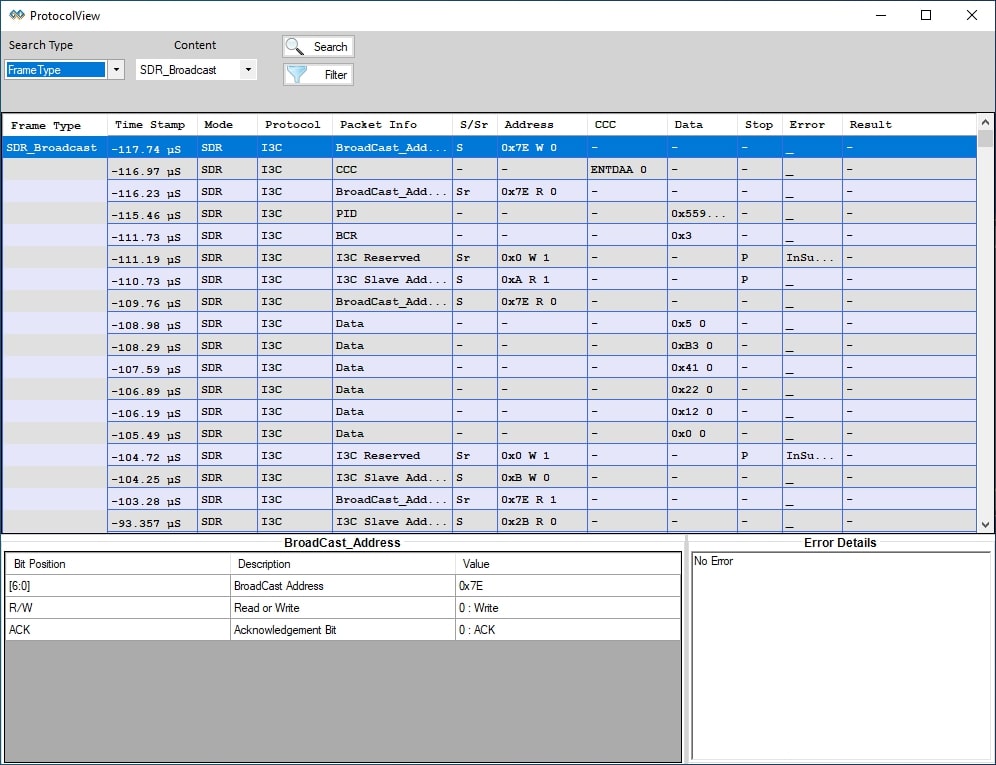
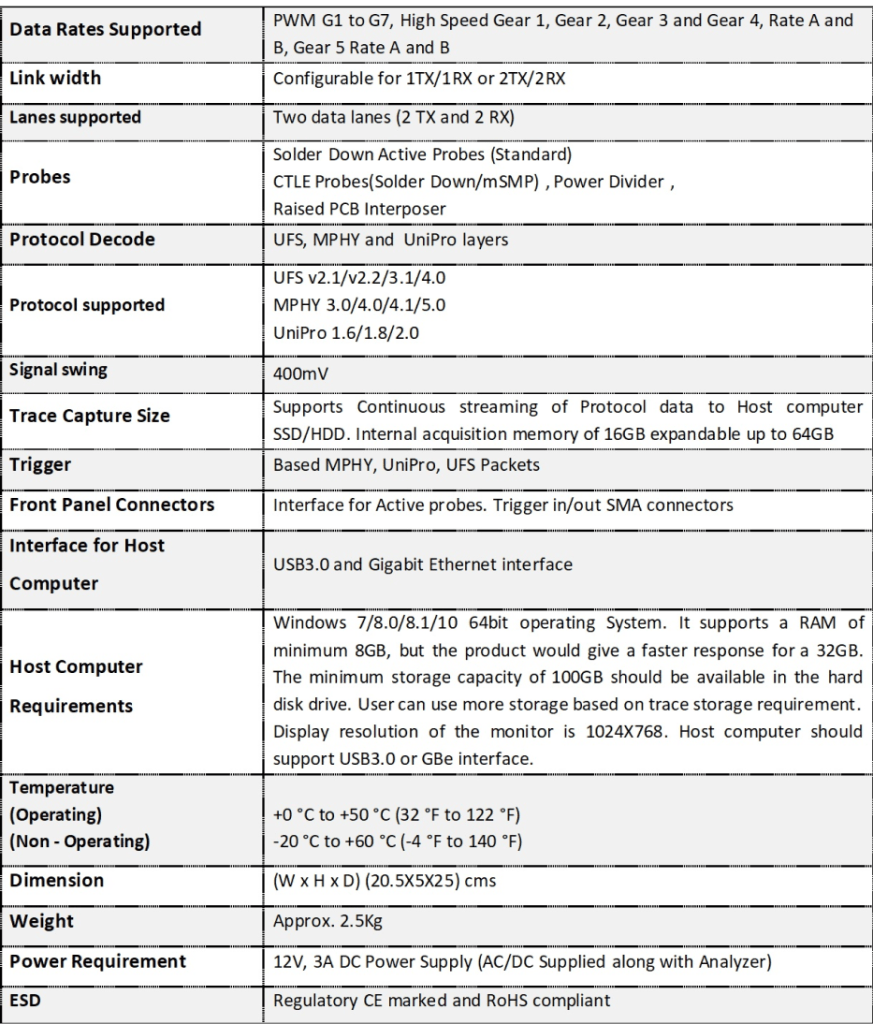
Protocol Analysis of I3C Signals
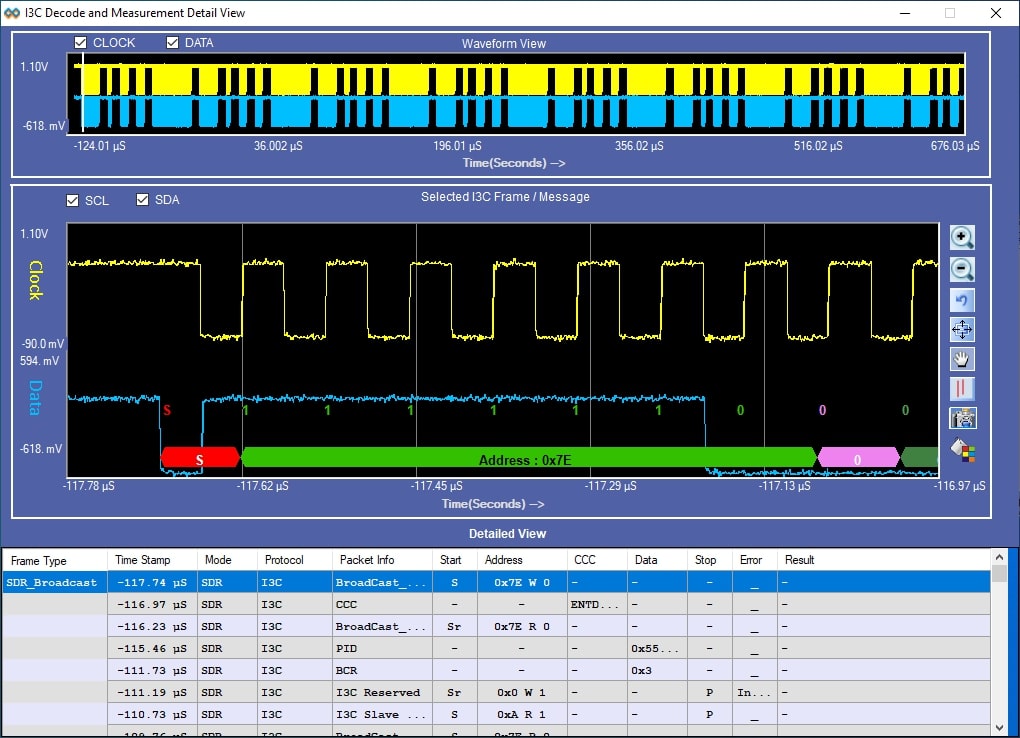
The detail view in I3C Protocol software allows the user to correlate protocol activity with physical layer waveform. The bus diagram in detail view shows protocol packet content. Decoded bit-level information is overlayed on the waveform to relate the packet-level information to the waveform.
Documentation of Protocol Analysis
PGY-I3C-PD I3C Protocol Trigger and decode software provides the flexibility of exporting the decode data in txt and CSV file format. Report Generation capability allows users to have different waveform images including the oscilloscope screenshot in pdf format report. Report header, comments, and test attributes can be added to the report.



